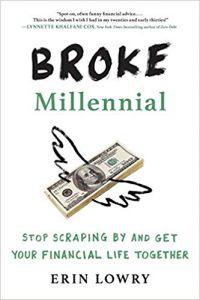Contents:

Hamilton and Dow stressed that, in order for a primary trend buy or sell signal to be valid, both the Industrial Average and the Rail Average must confirm each other. If one average records a new high or new low, then the other must soon follow for a Dow Theory signal to be considered valid. The volume looks different when confirming an uptrend and a downtrend.

What You Should Know About the Dow Theory – The Motley Fool
What You Should Know About the Dow Theory.
Posted: Thu, 26 May 2022 07:00:00 GMT [source]
For example- in an Upward Trend, analysts can observe a rise in volume and price proportionately . In the same manner, such as in Bearish Trend, the indices are likely to slop downwards. The Dow Theory also reveals another noteworthy point, which says that Primary Trend includes three phases; named.
Range Formation
At the time, the low on Sept-1 witnessed the highest volume ever recorded and the Oct-8 low recorded the second highest volume ever. Although these high-volume lows were not a signal in and of themselves, they helped form a pattern that preceded a historical advance. This advance took the DJIA ($INDU) from below 8000 to over in less than one year. Further confirmation of a change in trend came in the form of a new reaction high with high volume on Oct-15. The chart below of Coca-Cola is a relatively recent example of the primary trend remaining intact.

A low volume accompanying a movement should likely indicate that we are dealing with a secondary or minor trend. Furthermore, if there is significant volume while the prices are going down—people are overwhelmingly selling—during a bull market, it might indicate a trend reversal. The public participation phase is when the bulk of active investors catches the primary trend and starts moving assets en masse. This time is also known as the big move and often constitutes the largest part of the lifetime of the primary trend. Noteworthy is that the Dow theory is in many ways designed to get you in on the trades during this phase.
Dow Theory Explained
The theories of Dow are explained with six tenets or principles, these principles form the backbone of modern Technical Analysis of stocks. It’s a theory which says the market is in an upward trend if one of its averages advances above a previous important high and is accompanied or followed by a similar advance in the other average. In other words, if one average moves up in price then the other one will follow within a reasonable time frame. After identifying the primary trend, investors need to consider volume data to identify the phase of the primary trend and determine a profitable entry point. Subsequently, they also need to know what point to sell their assets and exit their trading positions. Bull MarketsA bull market occurs when many stock prices rise 20% from a recent low, with the price climb spanning for an extended period.
The market makers start to distribute their holdings, i.e., by selling to other participants who are yet to realize that the trend is about to reverse. The method of analyzing the intermarket relationship between industrial and transportation stocks is called “Dow theory,” which was coined by S.A. Nelson and refined by William Hamilton and Robert Rhea in the 1930s. The original idea comes from Charles Dow, founder of the Wall Street Journal who published hundreds of editorials on the topic before his death in 1902. For instance, the Dow Theory says that multiple indices should confirm a Primary Trend in a clear upward or downward trend. The Dow Theory focused on sectors of the Dow Jones stock index.
This second phase occurs when prices begin increasing, and financial and business news begins improving. At this point, more investors become bullish, and we see prices start to rise. Last but not least, the minor trends work the same way the secondary trend works in relationship to the primary trend. These are minor up and down moves that can last anywhere between 3 days and 3 weeks. According to Charles Dow, the minor trends are largely seen as the day to day noise.
Broad Market Movement Theorems
The https://forexanalytics.info/ pulls quickly and strongly to the “finish line” – a specific target level in the brokers’ pre-calculated scenario. The information you know from psychology, data on inflation, interest rates to wars, epidemics, etc, all have been reflected in the price. I will also take the example of the Gold market (XAU/USD) for tenets , and . But from tenets and , I will move on to talk about the Crypto market.
A high trading volume often means that the movement represents a true market trend. This is because when a majority of traders buy into certain positions, the stock price will move significantly in a uniform direction, signifying the onset of a primary market trend. The Dow theory was fundamental to technical stock market analysis and acted as the underlying principle for its continued advancement. In this way, technical analysis in accordance with theory assists investors in making profitable trading decisions by detecting established long, mid, or short-term trends. The second tenet tries to determine the important trends the market is going through.
- Predicting the market is a difficult, if not impossible, game.
- Barry D. Moore is a Certified Market Technical Analyst with the International Federation of Technical Analysts with over 20 years of investing experience.
- Thirdly, because it uses the DJIA and DJTA, Dow Theory is criticized as being outdated and no longer an accurate reflection of the economy.
- The EMH theory states that everything that can be known is already discounted by the market price.
- Notice I said most — When there is a significant price move, it shifts the probabilities in favor of an equilibrium (distribution/accumulation) pattern.
The theory is predicated on the notion that the market discounts everything, consistent with the efficient market hypothesis. Full BioSuzanne is a content marketer, writer, and fact-checker. She holds a Bachelor of Science in Finance degree from Bridgewater State University and helps develop content strategies for financial brands.
The Stock Market Discounts Everything
The concept of risk in stocks has diminished over time, but it is still a fact that stocks carry more risk than bonds. At the top of a primary bull market, hope springs eternal and excess is the order of the day. By the final stage of a bear market, all hope is lost and stocks are frowned upon. Valuations are low, but the selling continues as participants seek to sell no matter what.
- However, while the DJIA continued to make higher highs , the DJTA started moving significantly lower .
- The Dow Theory suggests the markets are made up of three distinct phases, which are self-repeating.
- Trends exist until definitive signals prove that they have endedDow believed that trends existed despite “market noise”.
- What’s more, the industry is incredibly volatile, with massive hikes and drops in crypto prices.
According to https://day-trading.info/ Theory, there are 3 movements of the market including primary trend, secondary trend and daily fluctuation. But in this price action series, we only mention 2 primary trends. Hamilton thought that volume should increase in the direction of the primary trend. In a primary bull market, volume should be heavier on advances than during corrections. Not only should volume decline on corrections, but participation should also decrease.
Phases of Primary Trends
There are the primary, secondary and tertiary—minor—trends. The primary trends are big, domineering, and tend to last for years if not decades. These can be upward or downward and are usually described as a bear or a bull market. The Dow theory has six core tenets which will most likely ring some major bells for anyone familiar with technical analysis. It takes into account the performance of big indices as a benchmark, measures volume, tries to differentiate between major and minor trends—as well as retracements and reversals.
Bitcoin stuck in bearish Elliott Wave pattern despite 47% rally, QCP Capital says – FXStreet
Bitcoin stuck in bearish Elliott Wave pattern despite 47% rally, QCP Capital says.
Posted: Thu, 23 Feb 2023 11:03:14 GMT [source]
For instance- suppose a https://forexhistory.info/ish trend occurs in India; the Sensex, Nifty, Nifty Midcap, Nifty Smallcap alongside other indices are likely to slop upwards. Panic Phase– This phase refers to the time when investors are likely to buy stocks in an extensive amount, which results in significant speculation. Primary Trend– It’s the most significant trend for the entire market. The primary Trend indicates the market-moves, especially in the long-term. For example, if a company is widely expected to report positive improved earnings, the market will reflect this before it happens.
What is the Rationale of the Dow Theory?
Just browse the internet to see Dogs of the Dow opinions, commentary, analyses, calculators, charts, forecasts, and stock screeners. Often, in fact, the Dogs have been able to outperform the Dow over the course of the year. If you’ve been reading till this line, turn on Tradingview and test it out. Is it true that all breakout points come with high volume?

In addition, long-term plans involve fewer trades and, therefore, have the benefit of lower trading costs compared to technical trading. Once the institutional investors absorb all the available stocks, short term traders since the support. This usually coincides with the improved business sentiment. During the Markup phase, the stock price rallies quickly and sharply. The most important feature of the markup phase is speed.
